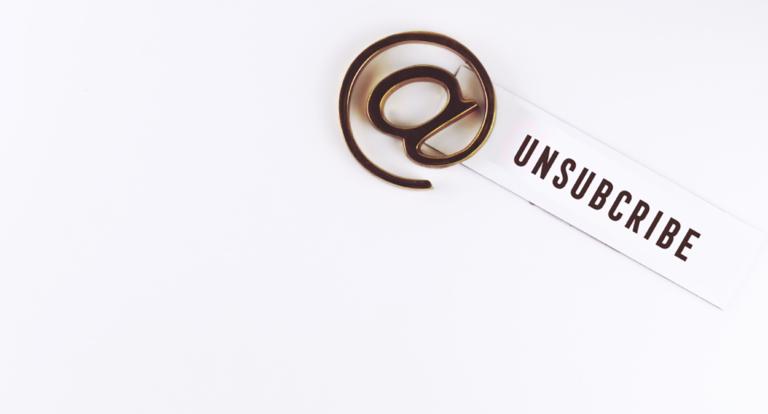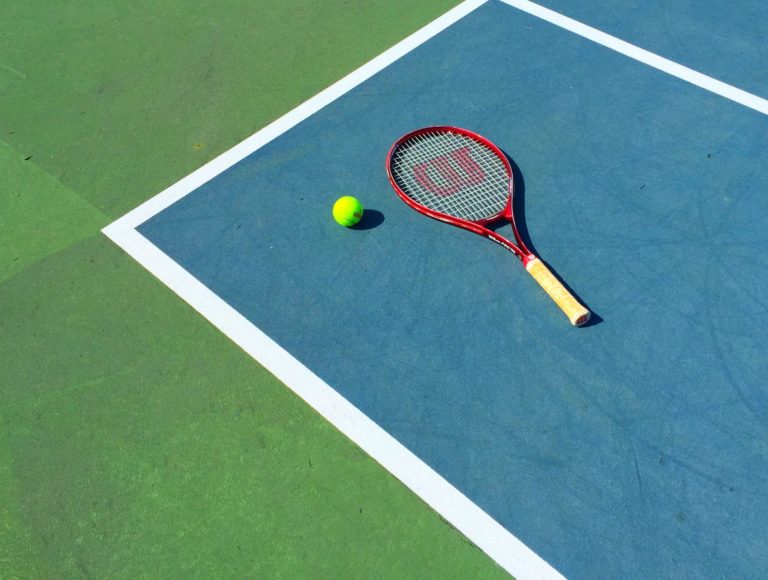
Are You More Likely to Buy Something the More Times You View It?
Imagine yourself window shopping.
You’re not particularly interested in buying anything at the moment, just taking a look to see what’s out there. Then you walk into a store. You browse the selection of items, picking up a few as you go and carrying them around as you continue to look. Once you’ve done a lap of the store, you go try the items on. Some work, some don’t. After you’ve finished, you take a look at what you liked. Keeping in mind you originally weren’t interested in buying anything, you’re now finding it difficult to put any of it back. Has this ever happened to you? You’re not the only one.
A UCLA study tried to find out if touching an object influenced a shopper’s perception of it. The research found that a shopper’s feeling of attachment increased after even merely touching an object. They feel as if they own it and value it more highly than if they had not touched it at all.
When you think about it, this makes sense. It explains why the traditional layout of so many retail stores place dressing rooms and registers tucked away in the back. It forces you to carry items as you walk through the store. But how does this behavior and influence transfer online? Are you more likely to buy something the more times you touch – or in this case – view it?
We set out to answer this question by exploring data from over 250 of Bluecore’s ecommerce brands. We analyzed purchases that occurred within 30 days of an initial product view to determine which number of views resulted in the highest conversion rate. Here’s what we found:
Overall conversion rate decreases as price increases, until $5,000
We began dissecting this information by looking at overall conversion rates by price. Before seeing the results, we expected to see conversion rates decrease as prices increased. We figured the larger the price point, the more important the purchase, and the more hesitant a shopper may be to pull the trigger, especially within 30 days.
Our data mostly supported this theory, but unexpectedly only until $5,000. Purchases above $5,000 saw an increase in conversions (albeit minimal) from 1.32% to 1.66%. Even more surprising is the significant increase in conversion rate at the $10,000 price point. From the $5,000 – $10,000 range at 1.66%, the $10,000+ conversion rate jumps almost two percentages to 3.45%.
Average Ecommerce Conversion Rate by Price
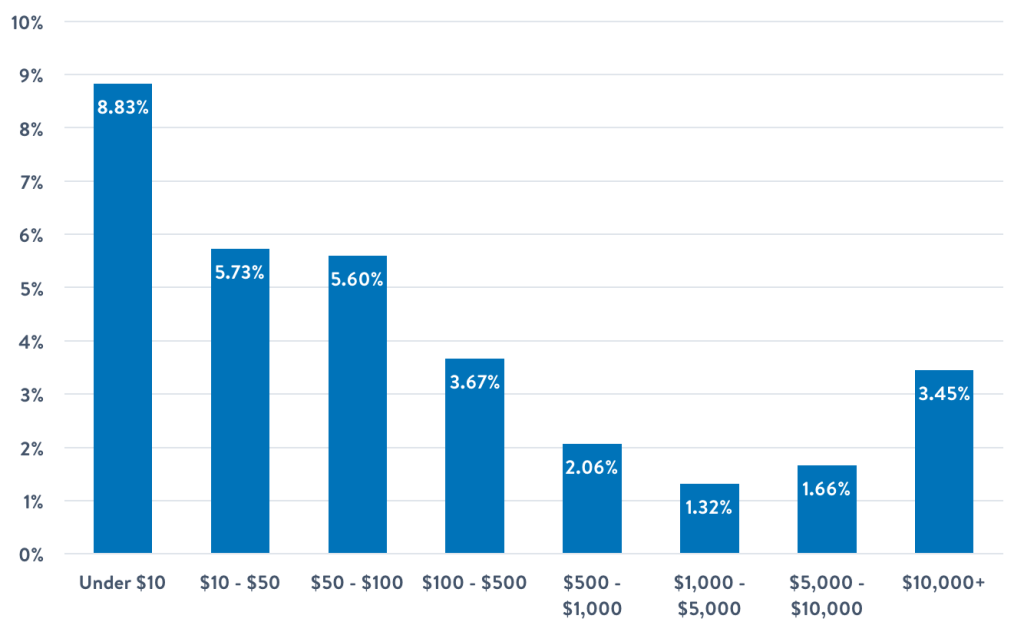
According to a study by Epsilon, 57.5% of luxury spenders are actually male, which is important to consider because men and women shop very differently. Women are generally more selective and shop around before making a purchase, whereas men seldom compare prices and would prefer to buy a less than ideal product than continue to shop around. According to another study by iProspect, 70% of affluent males regularly shop online.
So in general, luxury shoppers are more likely to be men, more likely to shop online and more likely looking to actually buy versus just shop around. This could be just one of many reasons for the conversion spike at $10,000+ purchases.
A single view has lowest conversion rate across all price points
The next step was to break down the conversion rates to see how they differed by number of views at each price point. Across the board, we saw that no price point had the highest conversion rate after only one view. We were actually surprised to see this behavior at the lower price points, especially for items under $10, thinking these would be a “one and done” purchases. What’s more surprising is how significantly lower the conversion rate was at one view compared to two. For items between $0 – $500 the difference in conversion rates between one view and two averaged to about 3%.
Average Conversion Rate by Price & Number of Views
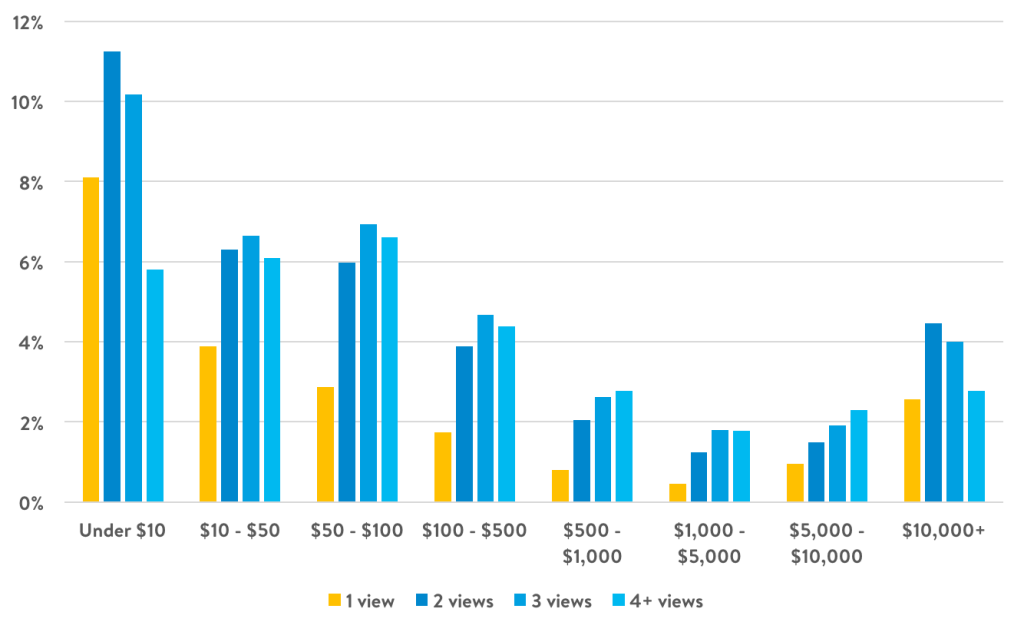
2 views has highest conversion for smallest and biggest purchases
Interestingly, buyers at a less than $10 price point and over $10,000 have similar online shopping habits. For both groups, the highest chance of conversion occurs at two views and drops significantly at four views or more. There are a few reasons why this could be. For a purchase that costs under $10, this could be a necessity item, such as toiletries, or a small add on accessory. It may justify minimal comparison shopping, but at the end of the day, the shopper likely won’t dwell on whether or not they can afford or justify the purchase. On the opposite end of the spectrum, we previously mentioned that luxury buyers at the $10,000+ price point are likely online shopping with the intention to actually buy versus browse. Regardless, it is interesting to see such similar behavior at either end of an extreme (and expensive) spectrum.
Under $10 & over $10,000 Conversion Rates
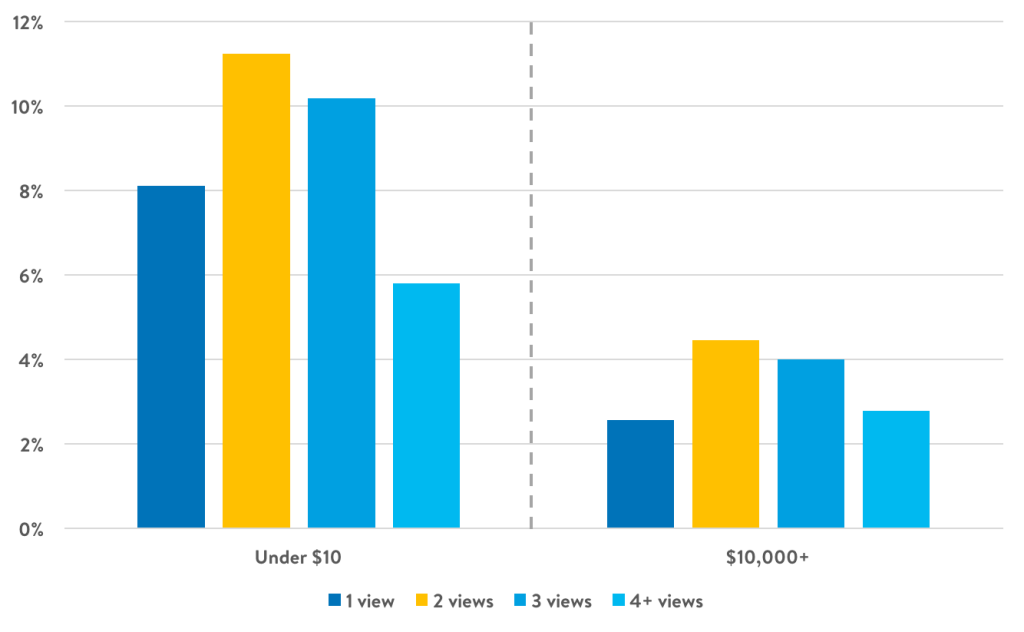
3 views has highest conversion for purchases between $10-$500
Shoppers making purchases that fall between $10 and $500 also shop very similarly, which is more expected. For these buyers, three views results in the highest chance for a conversion and only drops slightly at four or more views. Although an online shopper viewing a product three or more times within 30 days certainly shows intent to purchase, it also may signal comparison shopping.
Between $10 – $500 Conversion Rates
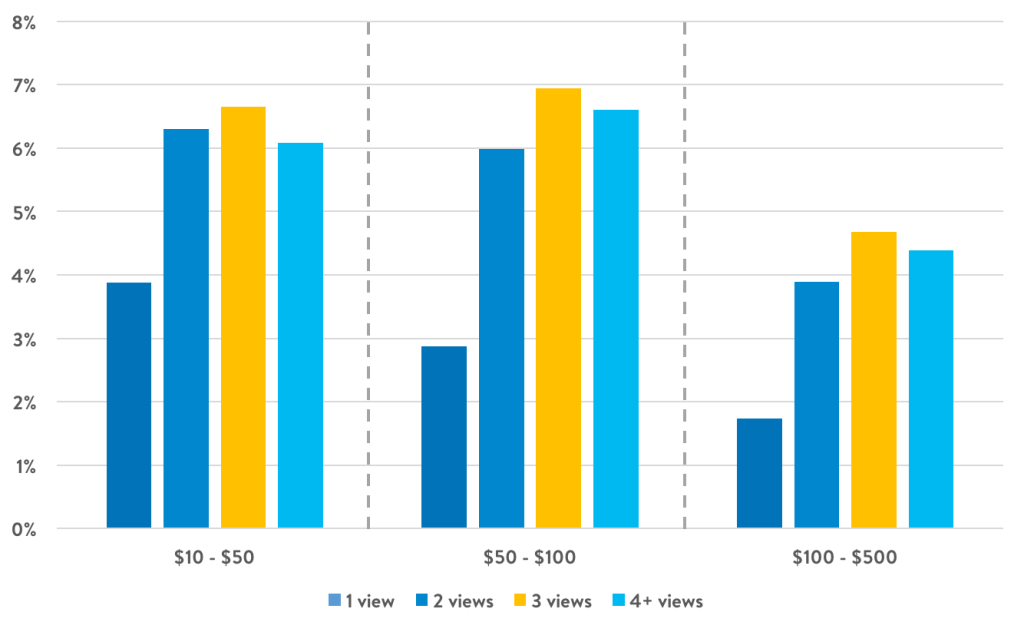
4 views has highest conversion for purchases between $500-$10,000
Finally, shoppers making purchases between $500 and $10,000 are most likely to buy after viewing products four or more times (although it is worth noting that conversion rates for three and four views of purchases between $1,000 and $5,000 only see a minimal difference of 0.01%). Based on this behavior, shoppers at these price points do not fall into the uber luxury category we’ve depicted earlier. These shoppers are likely purchasing something they consider an important investment and thus want to ensure they make the right selection.
Between $500 – $10,000 Conversion Rates
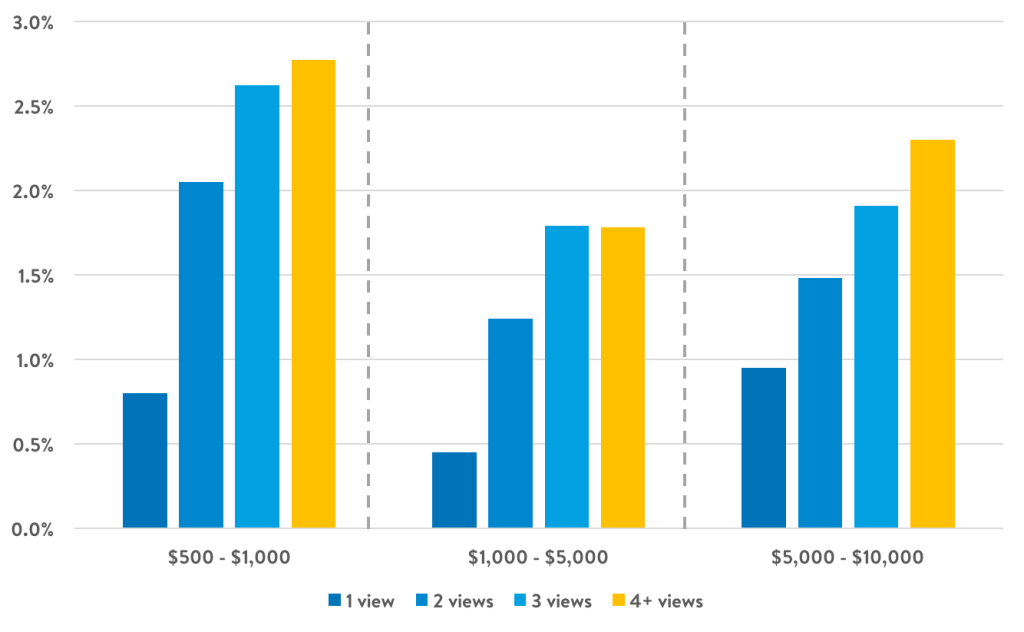
Customize marketing messages for optimal views at each price point
Whether these viewing and purchasing behaviors surprise you or not, it’s important to understand when your optimal chance for conversion is at each price point to deliver the right marketing message accordingly. For example, it’s more appropriate to send a shopper making a $5 purchase a more urgent message after one view, since you know your highest chance to convert them is at the second view. On the other hand, a shopper making a $700 purchase will require a more gentle sell with four or more touch points. Particularly when it comes to a marketing tactic like triggered email, it’s important to understand how many touches will result in your highest chance of conversion at each price point. To do this:
- Look at the various price points your products fall within
- Analyze the different purchase sizes your shoppers make
- Segment your shoppers into separate audiences and market to them accordingly with the appropriate number of touches and messages by price point
Knowing this will enable you to personalize your strategy for each customer and give your marketing program the best revenue potential.



